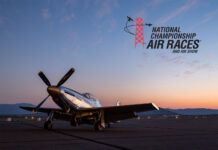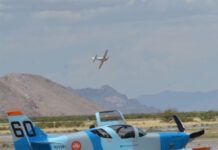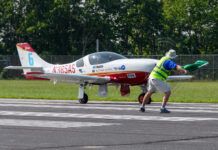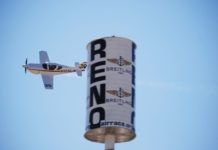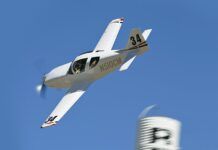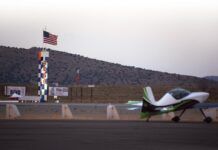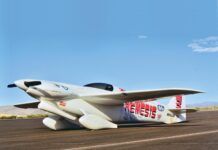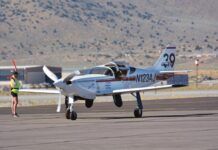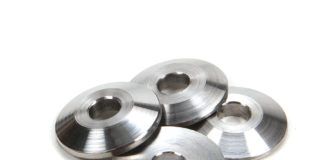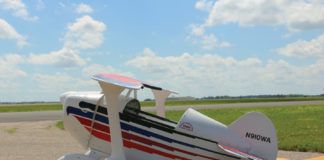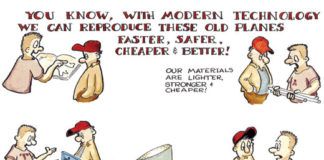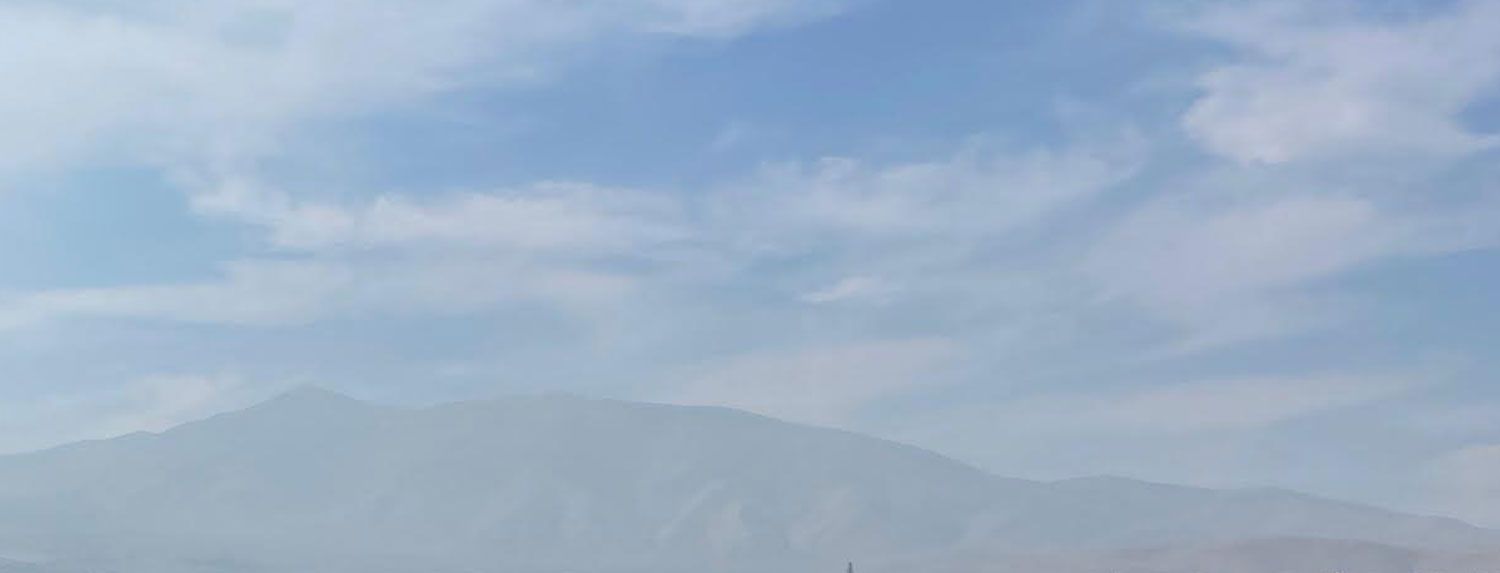
Wednesday morning greeted the assembled racers and spectators with smoke. Lots of smoke. And not the kind smoke that comes from smoke oil on a hot exhaust—this is wildfire smoke from a stubborn fire in California, just west of Lake Tahoe. Air Quality is measured on a numerical scale, with zero being dead clear, over 100 being unhealthy to sensitive groups, 150-200 unhealthy for everyone, and anything over 300 considered hazardous. This morning at Stead was showing in the mid-400’s, with visibility of 2 miles (or less)—definitely IFR. Such is late summer in the west, and if the winds will just come up a bit, maybe it will blow away. Imagine aviators wishing for stronger winds! At times, the ducks aren’t just walking, they are bumping into each other.
So while we’re waiting for the smoke to clear, let’s cover some background and definitions. This is, after all, aviation, and acronyms abound!
The National Championship Air Races (NCAR) is an event put on by the Reno Air Racing Association (RARA). The event is held, of course, at Stead Field (KRTS) about a dozen miles northwest of Reno International (KRNO), so don’t go to the wrong place. RARA is a non-profit organization which essentially provides a racing venue and schedule, a place for spectators, and a bit of a carnival atmosphere with booths for vendors of trinkets and food. That all happens up being the grandstands—we at Kitplanes rarely travel outside of the pit area, which is, of course, much more interesting, because there are airplanes here. What is also interesting is that RARA itself is not conducting the air racing, so to speak. The actual racing is governed by a series of organizations divided into classes. There is the Unlimited Class, of course, as well as the Jets. Then there is Sport (essentially kit-built experimentals… with a whole lot of modifications), Formula 1 (homebuilts) Biplanes (many homebuilts), and the T-6’s (we don’t talk much about them, mostly because they are too loud to talk over).
Each of the classes have their own set of rules that govern their racing, and each of them use courses that are set by RARA to the class standards. There are, of course, universal racing rules (don’t do anything exceedingly dangerous, don’t touch wings, don’t fly too low or to high, etc.), but the rules of competition and how folks move cup or down in the rankings can be byzantine. So if you happen to be sitting in the bleachers, wondering why different types of racers are on different courses, now you know, they all do their own thing. And don’t even get me started on the STOL (Short Take-off and Landings) Drags, a relatively new event conducted in front of the grandstands that those of us in the pits rarely see.
Here at mid-week, the racing is supposed to be getting started, with qualifying runs having been completed. Which is mostly true, but due to the smoke interruptions, some of the fastest planes have yet to clock official qualifying times, but we’re sure that the Byzantine Rule Committees will make sure they somehow get into the show. When racing commences, there will be a series of heats with confusing designations. Let’s look at the Sport Class for example – they have heats 1A, 1B, 1C, and 1D. This will be followed by 2A, 2B, etc. The number refers to the “round”, and the letter refers to the speed class – the “A” het being the fastest (Gold), the “B” being the next fastest (Silver), and these followed by Bronze (C) and Medallion (D) groups. Why they don’t call the heats 1,2,3 Gold, Silver, Bronze, etc. is anyone’s guess—probably due to computer formatting constraints.
So with all of these heats, there is action on the course, through Saturday night – but the only thing they contribute to the final Sunday results is if someone happens to be fast enough in their group to move up to the next group. The heats also serve to break airplanes, but that’s just sad…. On Sunday, the heats should have sorted everyone into their respective speed ranges, and the final races for each group (Sport Gold, Sport Silver, etc) are held to award trophies.
So come on up on any day (that we don’t have smoke) and see some airplanes fly around, hear some noise, and mingle with other aviation folks, if you have purchased a pit pass, of course. And if all the acronyms and rules confuse you, just sit back and realize that none of it makes any difference in the end. Its all a great show!


